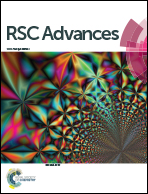Hyaluronic acid anchored paclitaxel nanocrystals improves chemotherapeutic efficacy and inhibits lung metastasis in tumor-bearing rat model†
Abstract
Paclitaxel (PTX) is a first line anti-tumor agent and is widely used in the treatment of breast cancer. However, there are several limitations associated with the drug which hamper its successful clinical application. To address these obstacles we envisaged developing a nanocrystal based formulation that can overcome its limitations and significantly improve its efficacy. In this work paclitaxel nanocrystals with particle size <250 nm were developed and subsequently coated with hyaluronic acid (HA) to impart both long circulating and tumor targeting properties. A systematic cell based in vitro evaluation of HA-PTX/NC on 2D monolayer and 3D spheroids demonstrates that hyaluronic acid coating was able to significantly improve the therapeutic efficacy compared to marketed formulation of PTX (Taxol™). It was observed that interaction of HA-PTX/NC with CD44 receptors played a significant role in enhancing the uptake and thereby efficacy of PTX against cancer cells. In vivo studies revealed that HA-PTX/NC significantly prolonged the blood circulation time of PTX with an increase of 8.4 fold of AUC0–∞ in comparison to Taxol™. Furthermore HA-PTX/NC were found to exhibit higher antitumor efficacy, reduced lung metastasis and reduced toxicity in LA-7 tumor bearing rat model than Taxol™. Findings suggested that anchoring hyaluronic acid on PTX nanocrystals can be a promising approach for anticancer therapy.


 Please wait while we load your content...
Please wait while we load your content...